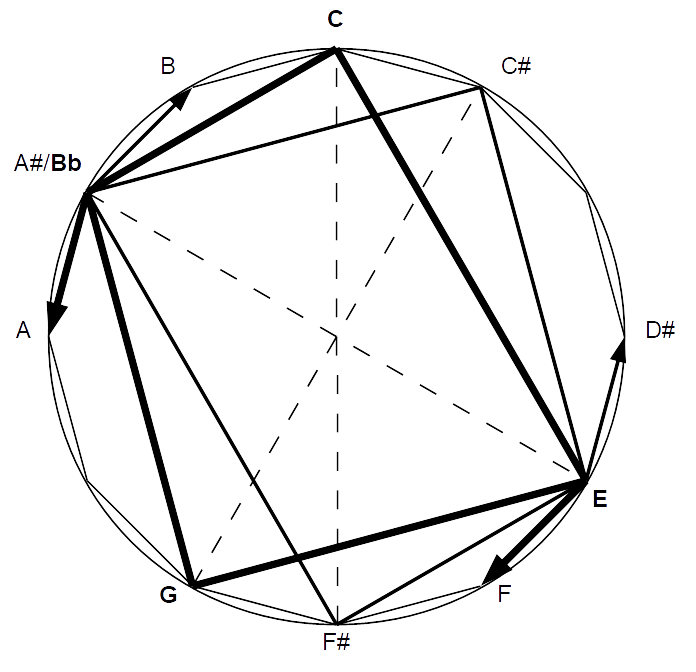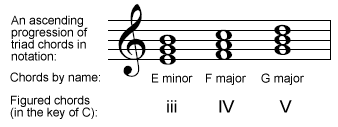|
A Night In Tunisia
"A Night in Tunisia" is a musical composition written by American trumpeter Dizzy Gillespie in 1942. He wrote it while he was playing with the Benny Carter band. It has become a jazz standard. It is also known as "Interlude", and with lyrics by Raymond Leveen was recorded by Sarah Vaughan in 1944. Background Gillespie called the tune "Interlude" and said "some genius decided to call it 'A Night in Tunisia'". He said the tune was composed at the piano at Kelly's Stables in New York. He gave Frank Paparelli co-writer credit in compensation for some unrelated transcription work, but Paparelli had nothing to do with the song. "A Night in Tunisia" was one of the signature pieces of Gillespie's bebop big band, and he also played it with his small groups. In January 2004, The Recording Academy added the 1946 Victor recording by Gillespie to the Grammy Hall of Fame. On the album '' A Night at Birdland Vol. 1'', Art Blakey introduced his 1954 cover version with this statement: "At this ... [...More Info...] [...Related Items...] OR: [Wikipedia] [Google] [Baidu] |
Dizzy Gillespie
John Birks "Dizzy" Gillespie ( ; October 21, 1917 – January 6, 1993) was an American jazz trumpeter, bandleader, composer, educator and singer. He was a trumpet virtuoso and improvisation, improviser, building on the virtuosic style of Roy Eldridge but adding layers of Harmony, harmonic and rhythmic complexity previously unheard in jazz. His combination of musicianship, showmanship, and wit made him a leading popularizer of the new music called bebop. His beret and horn-rimmed spectacles, scat singing, bent horn, pouched cheeks, and light-hearted personality have made him an enduring icon. In the 1940s, Gillespie, with Charlie Parker, became a major figure in the development of bebop and modern jazz. He taught and influenced many other musicians, including trumpeters Miles Davis, Jon Faddis, Fats Navarro, Clifford Brown, Arturo Sandoval, Lee Morgan, Chuck Mangione, and balladeer Johnny Hartman. He pioneered Afro-Cuban jazz and won several Grammy Awards. Scott Yanow wrote: "Di ... [...More Info...] [...Related Items...] OR: [Wikipedia] [Google] [Baidu] |
Bobby McFerrin
Robert Keith McFerrin Jr. (born March 11, 1950) is an American singer, songwriter, and conductor (music), conductor. His Vocal pedagogy, vocal techniques include singing fluidly but with quick and considerable jumps in Pitch (music), pitch—for example, sustaining a melody while also rapidly alternating with arpeggios and harmonies—as well as scat singing, Polyphony, polyphonic overtone singing, and improvisational vocal percussion. He performs and records regularly as an unaccompanied solo vocal artist. He has frequently collaborated with other artists from both the jazz and Classical music, classical scenes. McFerrin's song "Don't Worry, Be Happy" is the only A cappella, acapella track to ever reach No. 1 in the US, which it reached in 1988 and additionally won Grammy Award for Song of the Year, Song of the Year and Grammy Award for Record of the Year, Record of the Year honors at the 31st Annual Grammy Awards, 1989 Grammy Awards. McFerrin has also worked in collaboration ... [...More Info...] [...Related Items...] OR: [Wikipedia] [Google] [Baidu] |
Boyd Raeburn
Boyd Albert Raeburn (October 27, 1913 – August 2, 1966) was an American jazz bandleader and bass saxophone, bass saxophonist. Career He was born in Faith, South Dakota, United States. Raeburn attended the University of Chicago, where he led a campus band. He gained his earliest experience as a commercial bandleader at Century of Progress, Chicago's World Fair (1933–1934). For the rest of the decade, he worked in dance bands, sometimes leading them. In the next decade, the group passed through swing before becoming identified with the bop school. His later big band, which was active c. 1944-1947, performed arrangements that were often comparable to those used by Woody Herman and the "progressive jazz" of Stan Kenton during the same period. The compositions arranged by George Handy were the most contemporary, utilizing dissonance somewhat in the manner of Igor Stravinsky. Johnny Richards joined in 1947, following Handy and stayed for a year writing 50 compositions. Later life ... [...More Info...] [...Related Items...] OR: [Wikipedia] [Google] [Baidu] |
Oscar Pettiford
Oscar Pettiford (September 30, 1922 – September 8, 1960) was an American jazz double bassist and composer. He was one of the earliest musicians to work in the bebop idiom. Jazz bassist Christian McBride called Pettiford "probably the most important bass player of that bebop generation in terms of creating new language for the bass." Early life Pettiford was born in Okmulgee, Oklahoma, United States. His mother identified as being of Choctaw descent, and his father Harry "Doc" Pettiford identified as half Cherokee and half African-American. He grew up playing in the family band, in which he sang and danced before switching to piano at the age of 12, then to double bass when he was 14. Jamela Pettiford, a singer in St. Paul, Minnesota, and a descendant of the Pettiford family, told Minnesota Public Radio in 2022 that the Pettiford family band traveled itinerantly for a time as road musicians before settling in north Minneapolis. Pettiford is quoted as saying that he did not ... [...More Info...] [...Related Items...] OR: [Wikipedia] [Google] [Baidu] |
Break (music)
In popular music, a break is an instrumental or percussion instrument, percussion section during a song derived from or related to stop-time – being a "break" from the main section (music), parts of the song or piece. A break is usually interpolated between sections of a song, to provide a sense of anticipation, signal the start of a new section, or create variety in the arrangement. Jazz A solo break in jazz occurs when the rhythm section (piano, bass, drums) stops playing behind a soloist for a brief period, usually two or four bars leading into the soloist's first improvised solo chorus (at which point the rhythm section resumes playing). A notable recorded example is sax player Charlie Parker's solo break at the beginning of his solo on "A Night in Tunisia". While the solo break is a break for the rhythm section, for the soloist, it is a solo cadenza, where they are expected to improvise an interesting and engaging melodic line. DJing and dance music In DJ parlance, in di ... [...More Info...] [...Related Items...] OR: [Wikipedia] [Google] [Baidu] |
Alone Together (1932 Song)
"Alone Together" is a song composed by Arthur Schwartz with lyrics by Howard Dietz. It was introduced in the Broadway musical '' Flying Colors'' in 1932 by Jean Sargent. The song soon became a hit, with Leo Reisman and His Orchestra's 1932 recording (vocal by Frank Luther) being the first to reach the charts. It has become a jazz standard. The first jazz musician to record the song was Artie Shaw in 1939. Other versions * Pepper Adams - ''Conjuration: Fat Tuesday's Session'' (1957) * Chet Baker - Chet (1959) * Tony Bennett - recorded on February 28, 1960, for his album '' Alone Together'' (1960). * Pat Boone - for his album '' The Touch of Your Lips'' (1964). * Ray Charles and Betty Carter – '' Ray Charles and Betty Carter'' (1961) * Vic Damone - for his album ''This Game of Love'' (1959). * Miles Davis – '' Blue Moods'' (1955) * Paul Desmond with Jim Hall – ''Take Ten'' (1963) * Jim Hall - Ron Carter Duo – '' Alone Together (Ron Carter and Jim Hall album)'' (1973) * ... [...More Info...] [...Related Items...] OR: [Wikipedia] [Google] [Baidu] |
Tritone Substitute
The tritone substitution is a common chord substitution found in both jazz and classical music. Where jazz is concerned, it was the precursor to more complex substitution patterns like Coltrane changes. Tritone substitutions are sometimes used in improvisation—often to create tension during a solo. Though examples of the tritone substitution, known in the classical world as an augmented sixth chord, can be found extensively in classical music since the Renaissance period, they were not heard outside of classical music until they were brought into jazz by musicians such as Dizzy Gillespie and Charlie Parker in the 1940s, as well as Duke Ellington, Art Tatum, Coleman Hawkins, Roy Eldridge and Benny Goodman. The tritone substitution can be performed by exchanging a dominant seventh chord for another dominant seventh chord which is a tritone away from it. For example, in the key of C major one can use D7 instead of G7 (D is a tritone away from G, and G is the dominant of C). Summ ... [...More Info...] [...Related Items...] OR: [Wikipedia] [Google] [Baidu] |
Chord Changes
In a musical composition, a chord progression or harmonic progression (informally chord changes, used as a plural, or simply changes) is a succession of chords. Chord progressions are the foundation of harmony in Western musical tradition from the common practice era of Classical music to the 21st century. Chord progressions are the foundation of popular music styles (e.g., pop music, rock music), traditional music, as well as genres such as blues and jazz. In these genres, chord progressions are the defining feature on which melody and rhythm are built. In tonal music, chord progressions have the function of either establishing or otherwise contradicting a tonality, the technical name for what is commonly understood as the " key" of a song or piece. Chord progressions, such as the extremely common chord progression I-V-vi-IV, are usually expressed by Roman numerals in Classical music theory. In many styles of popular and traditional music, chord progressions are expressed using ... [...More Info...] [...Related Items...] OR: [Wikipedia] [Google] [Baidu] |
Quarter Note
A quarter note ( AmE) or crotchet ( BrE) () is a musical note played for one quarter of the duration of a whole note (or semibreve). Quarter notes are notated with a filled-in oval note head and a straight, flagless stem. The stem usually points upwards if it is below the middle line of the staff, and downwards if it is on or above the middle line. An upward stem is placed on the right side of the notehead, a downward stem is placed on the left (see image). The Unicode symbol is U+2669 (). A quarter rest (or crotchet rest) denotes a silence of the same duration as a quarter note or crotchet. It is notated with the symbol . In some older music it was notated with symbol .''Rudiments and Theory of Music'' Associated Board of the Royal Schools of Music, London 1958. I,33 and III,25. The former section shows both forms without distinction, the latter the "old" form only. The book was the Official ABRSM theory manual in the UK up until at least 1975. The "old" form was taugh ... [...More Info...] [...Related Items...] OR: [Wikipedia] [Google] [Baidu] |
Walking Bass
Bassline (also known as a bass line or bass part) is the term used in many styles of music, such as blues, jazz, funk, dub and electronic, traditional, and classical music, for the low-pitched instrumental part or line played (in jazz and some forms of popular music) by a rhythm section instrument such as the electric bass, double bass, cello, tuba or keyboard (piano, Hammond organ, electric organ, or synthesizer). In unaccompanied solo performance, basslines may simply be played in the lower register of any instrument while melody and/or further accompaniment is provided in the middle or upper register. In solo music for piano and pipe organ, these instruments have an excellent lower register that can be used to play a deep bassline. On organs, the bass line is typically played using the pedal keyboard and massive 16' and 32' bass pipes. Riffs and grooves Basslines in popular music often use "riffs" or " grooves", which are usually simple, appealing musical motifs ... [...More Info...] [...Related Items...] OR: [Wikipedia] [Google] [Baidu] |





